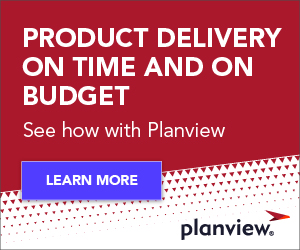
You’ve probably been hearing a lot lately about Lean and Agile or Agile transformation. Makes sense, as today’s ever-changing marketplace is causing an enterprise-wide shift within companies—a shift to deliver faster. This new focus on delivery is leading organizations to change how they are structured. They are moving toward either dedicated teams or a hybrid model with a mix of dedicated and temporal teams. Both equip companies with the flexibility and autonomy in how teams, departments, and roles are organized to accelerate delivery. While many have been focused on agile methodologies and tools at the team level, the transformation is really occurring across the enterprise.
It’s about how organizations are changing.
Organizations are changing how they work to deliver faster. They are transitioning from traditional structures, those with siloed, top-down hierarchies, to a structure with more autonomous teams, those who are adaptable and flexible, with leaders who focus on action and direction.
Agile has required organizations to rethink how they organize their people.
This may all sound well and good—organizations are evolving to become more agile by reorganizing their team structures—but reorganizing an entire company structure is a serious and timely process, one that many organizations may never complete. And that’s okay.
Those companies who have successfully undergone agile transformation report that it took, on average, 3-4 years to do so. On the flip side, many others come to the realization that they’ll never get there. Thus, they land in a hybrid world—a world with some parts structured, some parts more agile—which is completely fine. At the end of the day, it doesn’t matter how people or teams are organized to deliver their work.
What matters is having the ability to support any type of work.
An agile transformation also requires a resource management transformation. Your organization must acquire the ability to support a range of methodologies and internal structures, bringing people together from different functions, multiple projects, and potentially overlapping teams. You must understand each team structure to then effectively manage resources—project teams, hybrid teams, and dedicated teams. Let’s examine the difference between each, through the lens of how Planview Portfolios release 17 can help.
 1. Project teams. Many organizations continue to operate with project-based teams, even with the growing trend for formal team assignments. But with the right system in place, you’ll still be able to manage people when an informal team is required for one or more projects at a time.
1. Project teams. Many organizations continue to operate with project-based teams, even with the growing trend for formal team assignments. But with the right system in place, you’ll still be able to manage people when an informal team is required for one or more projects at a time.
 2. Hybrid teams. With the right resource management system, it is easier than ever for resource managers to filter and groups teams to visualize what work a dedicated team is responsible for as well as which individuals are working for multiple teams, without losing sight of department and role.
2. Hybrid teams. With the right resource management system, it is easier than ever for resource managers to filter and groups teams to visualize what work a dedicated team is responsible for as well as which individuals are working for multiple teams, without losing sight of department and role.
 3. Dedicated teams. If your organization already has adopted the approach of dedicated teams, it can be easily supported and modified as complexities arise with a work and resource management system.
3. Dedicated teams. If your organization already has adopted the approach of dedicated teams, it can be easily supported and modified as complexities arise with a work and resource management system.

Regardless of people are structured within your organization, a flexible resource management system enables resource managers to easily optimize resources across the entire organization. For those organizations in the middle of an agile transformation, managers face the difficult job of navigating constant changes while still having to manage their people and complete their own work. Tremendous complexity arises out of having some people on dedicated teams, others floating across teams, and others even working on temporary work that is based on their individual role. But it doesn’t have to be so difficult.
With Planview Portfolios’s resource management, you’ll be able to scale across all different types of organizational models that support a range of methodologies and internal structures. Then, resource managers will have the ability to see the team forecast within their portfolio along with the departments, roles, and individual named resources to easily manage across a portfolio that supports the variety of approaches in which people may be organized.
Planview Portfolios release 17 may be the right solution for your organization. Not only does it support a variety of organizational configurations such as project teams that bring people together from different functions, but also dynamic teams working on multiple project and arrangements where individuals work with multiple teams at the same time, and/or dedicated teams. With customer-driven enhancements that were either submitted or requested through the Inner Circle program, this release introduces improvements and changes across the following areas:
- Work management;
- Investment and capacity planning;
- Financial planning;
- Strategy;
- Outcome;
- Administration; and
- Analytics and reporting.
For more information on all these enhancements and many more, visit Planview.info/ExploreNewE1, the Customer Success Center, or ask your Planview representative today! Interested in getting started with work and resource management? Visit www.planview.com and register for a free demo of one of our leading solutions.






